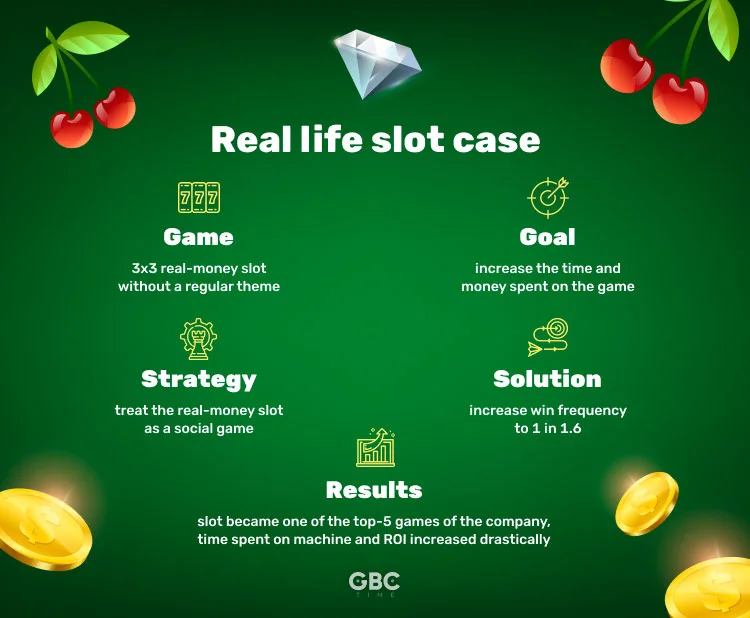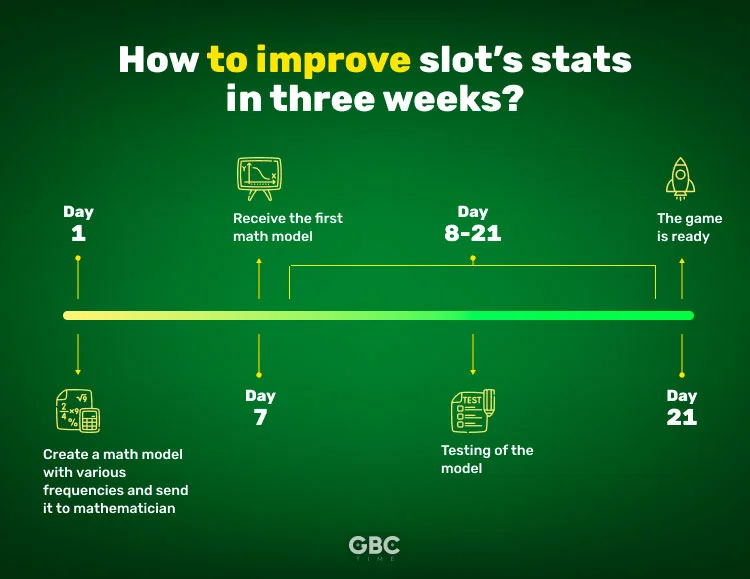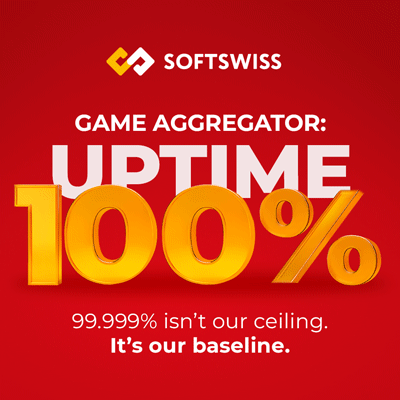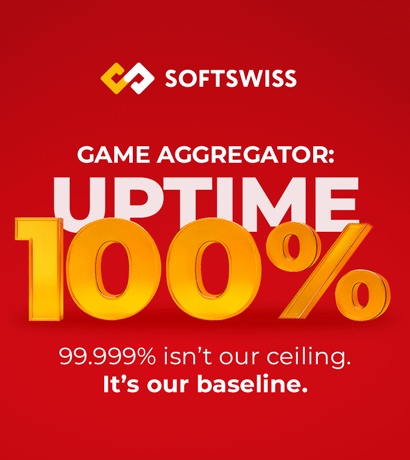Slot games are among the most popular games of chance. According to Statista, in July 2020, there were 1 140 743 slot machines in casinos worldwide. But with such a wide variety of slots, how can your game stand out from the rest? That’s where gambling mathematics can help. Slot consultants employ different growth strategies to make online games of chance more popular. GBC Time has examined a real-life case of creating a growth strategy for a slot game.
Guy Hasson, CEO of Old Man Productions, a slot data-driven consulting firm, has told GBC Time about a case where he improved the stats of a slot game in a mere three weeks.
Guy has consulted for slot companies big and small to improve their KPIs. Most recently opened a boutique, high-end slots studio Euphoria Studios based on Super Retention. The text below is in Guy’s own words.
Interesting cases from Guy’s slot consulting career
There have been many and many interesting cases over the years.
The Pink Panther trilogy
There is the story of the ridiculous coincidence. Over the last twelve years, I helped design the Pink Panther slot for Playtech in the real-money world, created the Pink Panther slot for Playtika for the social slot world, and now created the Pink Panther slot for PlayWorks on Roku. I never sought it out, the Pink Panther is not an ideal slot’s theme, and there are a lot of limitations on how we can use the IP. After the first time working on it on Playtech, I never wanted to touch it again.
And yet, just like in The Godfather, they pull me back in each time I think I am out!
Cases of delusion
Then, there are cases where I helped new companies avoid terrible trouble because they did not understand how players could cheat.
There were two cases of delusion where the CEOs, who did not come from the slot’s world, decided they could create dozens of slots in a few months even while their teams were having trouble creating one slot. In both cases, I tried to help by showing that their expectations were not realistic and trying to help them set a more realistic roadmap. In both cases, I was fired. (Both projects kept working for a year and yet never released a single slot).
T3 model creation – amazing math can overshadow terrible graphics and themes
There is the story of where I created the T3 Math Model to save a social slot company, and by raising their time on the machine by hundreds of percent, I learned that amazing math could make players blind to terrible graphics and themes.
The greatest failure led to the ROE creation
Then there is my greatest failure: as a test, I created a slot game where every spin was guaranteed to be a win. The Return to Player (RTP) ratio was around 97% if I recall. This moment forced me to invent the Rate of Exhaustion (ROE). And I learned how important ROE is. It is not the RTP that matters, it is how fast you lose the money. In a game where every spin wins, you would lose your money so slowly that the game would have a negative ROI.
Ever since, I have used ROE, learned the ROE of great games and terrible games, and used it regularly as a tool alongside the RTP.
Case study: growth strategy for a 3×3 real money slot
But for our purposes here, I would actually like to concentrate on a very small game that taught me a great lesson.
It was a 3×3 real-money slot. It did not have a regular theme. Instead, it looked like three clotheslines with birds on them. On one side of the reels was a cat. Every time you clicked SPIN, the cat would jump at the birds, the birds would fly up and out of the screen, and as the cat landed on the other side of the reels, the birds (symbols) would land again on the three clotheslines.
When I came along, there was animation, there was math, but the game just did not take off.
My goal was to make it work.

Goal: to increase time and money spent on the slot
We had simple tools:
- how many spins people were playing;
- how much they were spending on it;
- how well it did in comparison with the other games.
This was a company that created its games and the lobby for the games, so they could also easily compare one game to another.
My goal was to increase the time on the machine and, as a direct result, the amount of money that people were spending on the machine.
Research has shown that it is best to treat a real money slot as a social slot
Research is the first thing I come up with. The results of tests I have run for dozens of companies regarding their most successful slots, analyzed according to various elements, are already in my head. I compare the type of game, the theme, who it should appeal to, the features, the math, and various other aspects that give the game the best chance of success, according to what has already proven itself before.
The thing I decided to do was to treat this real money game as a social game. Let me explain what that means.
Research has shown that, at the time, players who were hardcore casino players would play games A, B, and C in a casino. But when they went home, they would not play games A, B, and C on social slots even though these were available. The players would play games X, Y, and Z.
At-home players wanted fun social games
After talking to many players, the conclusion was simple: real money slots are a serious business. Social slots are perceived as fun. It is just “a game.” At home, these players wanted a fun game. In the casino, they wanted an actual casino game.
The solution was to create a social game’s math with a win frequency of 1 in 1.6
Since the graphics were that of a fun, animated game and not a serious casino game, I decided to create social math with very high win frequency. A high win frequency, at the time, was rare for real money games and rarer for 3×3 slots. Yet I asked the mathematician for a win frequency of around 1 in 1.6.
The math model with various frequencies was created on the first day
I decided only to change the math of the game. So, I created a math model with multiple frequencies on the day I sat down to work on the game and sent it off to the mathematician.
The game was ready in three weeks
I think it was a week before we got the first math model. After two more weeks of tweaks and tests, the game was ready.

The most difficult part: communication with casino mathematicians
The most challenging part is when you speak to many casino mathematicians, they find demands for high frequency wins quite inconceivable. Not all of them, but I have encountered enough to know that it is a problem caused by habit and failure to think outside the box.
Many casino mathematicians who said it was impossible eventually found a way to create great games.
Other mathematicians, though, could do it without a problem. There were more of the first kind than the second at the time.
Mathematician – the key specialist for the project
Many teams had worked on the game:
- developers;
- artists;
- animators;
- sound, etc.
But when I was asked to help with the game, the only one I needed was a mathematician. Everything else was already ready.
The new strategy brought the slot to the top-5 list
I was not involved in the marketing. The game was in the lobby again in the same place. I think they added a sticker to it with the word NEW! or something to that effect to indicate it was a new version. And that was it. The game became one of their top 5 games and remained so for the year, I advised this company. I have no data regarding what happened to it after I left.
The slot was the company’s most expensive game
This was a company that created slots relatively cheaply. This particular slot was their most expensive one, as it had more animations and more graphic effort than in their other games. All that money had been spent before I came along, and the game was unsuccessful. When I came along, they paid me, of course, and the mathematician, and that is it. That was enough to change the ROI of the game.
Time spent on the slot improved drastically
You can see the players liked the game when the time on the machine improved drastically, bringing the game to the top five. I do not remember the exact percentage of improvement. At the end of the day, that makes the difference, though.
The client created two more slots with the same animation type
The clients were satisfied enough to want to create two more games with the same kind of game-like animation, and they wanted to use the same math. We worked with complete cooperation. There was not any problem at all.
The math was the only thing to change
The game was too specific to change anything in the graphics or the concept. It was what it was, and the only thing that could and should have been changed was the math. Since it was successful, I would not change it, not even now, years later.
Read more: Best iGaming Aggregators















